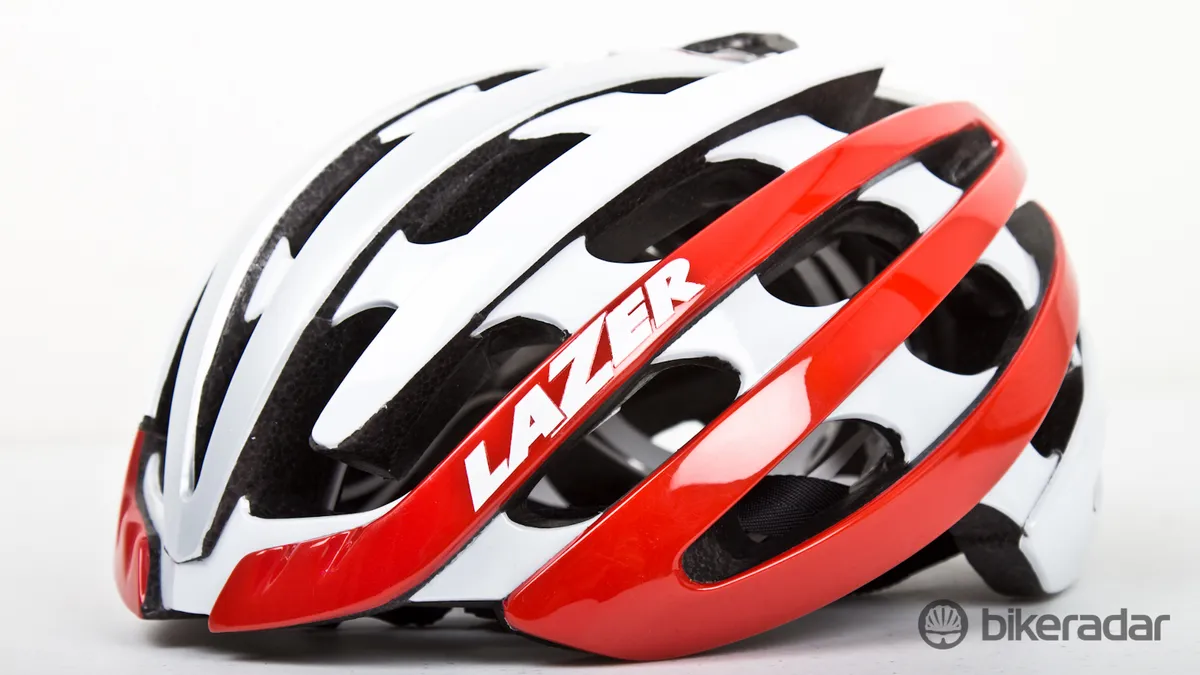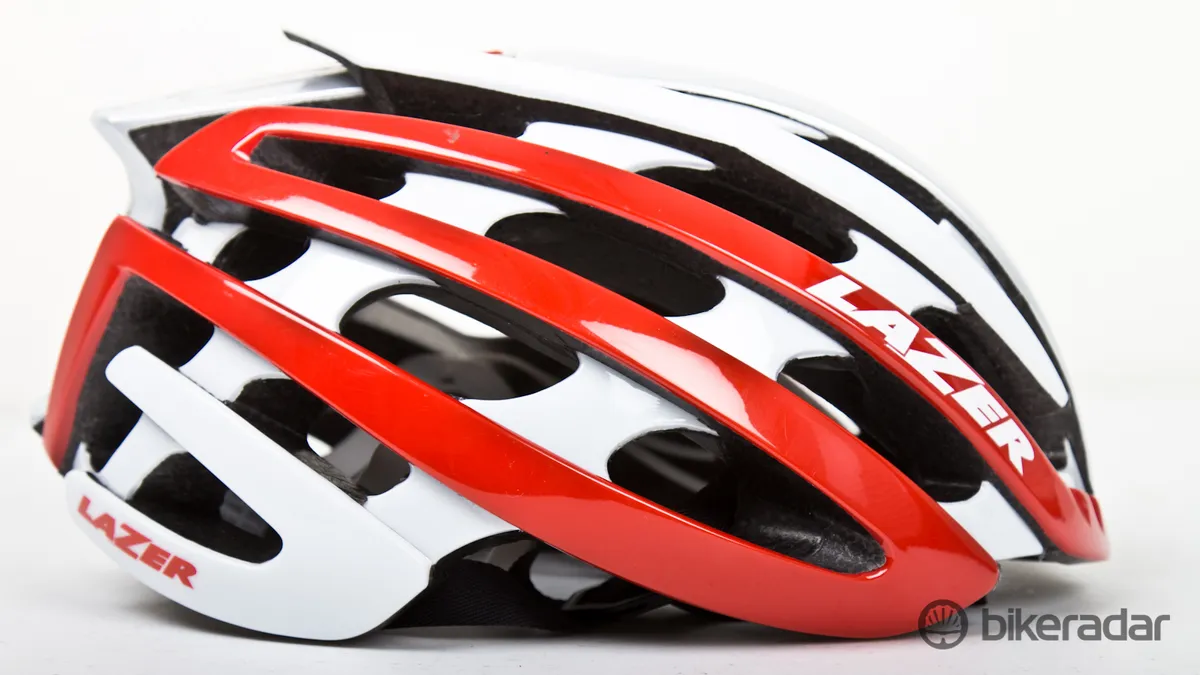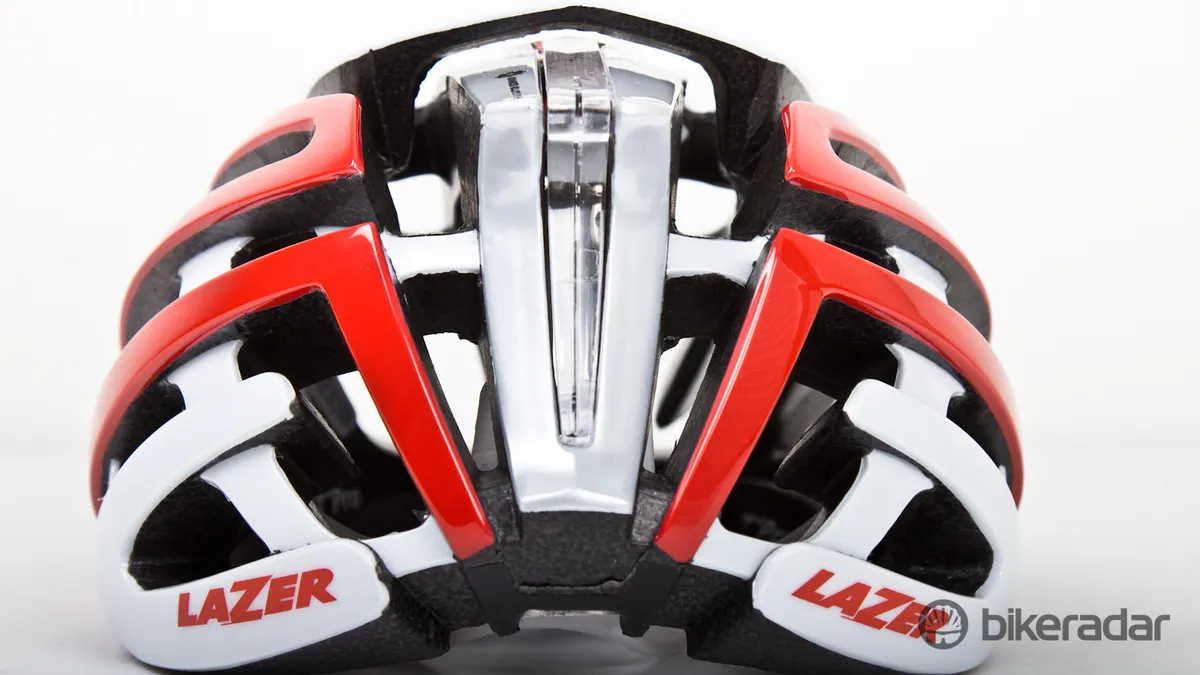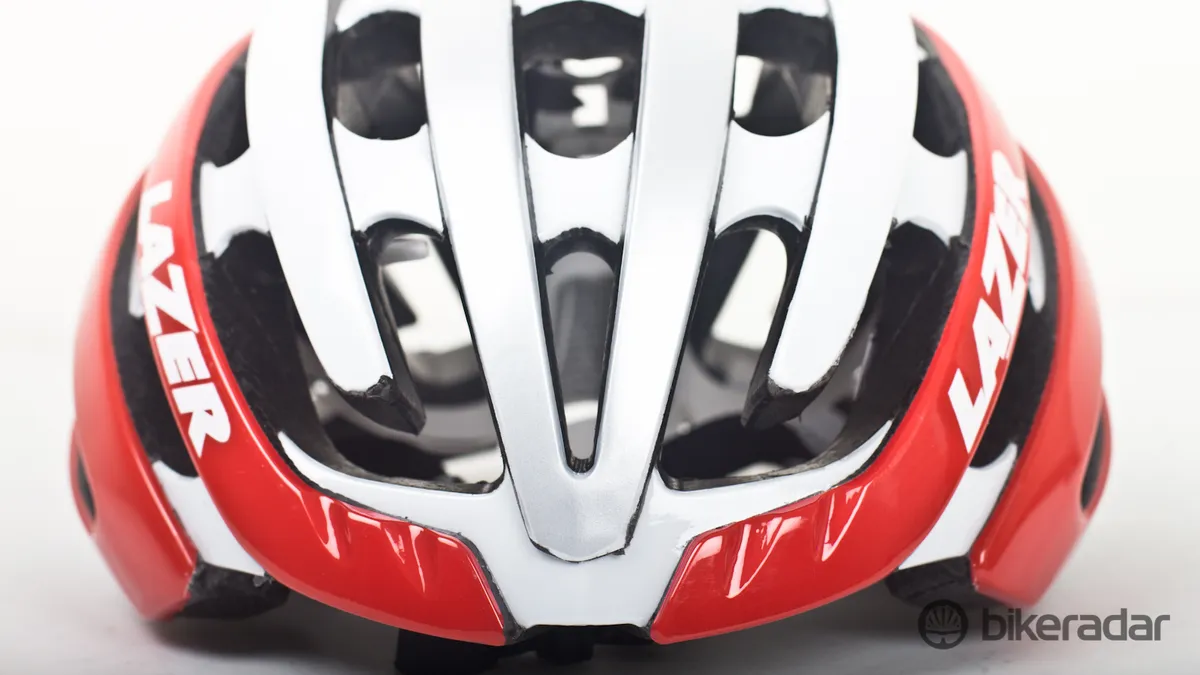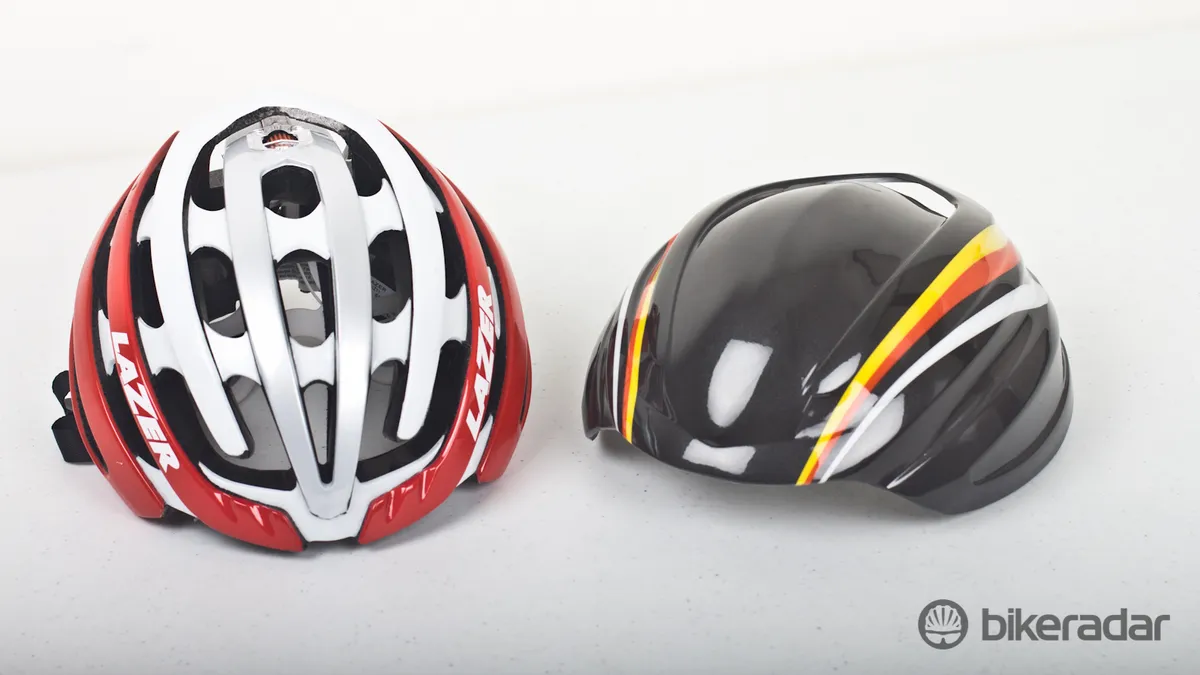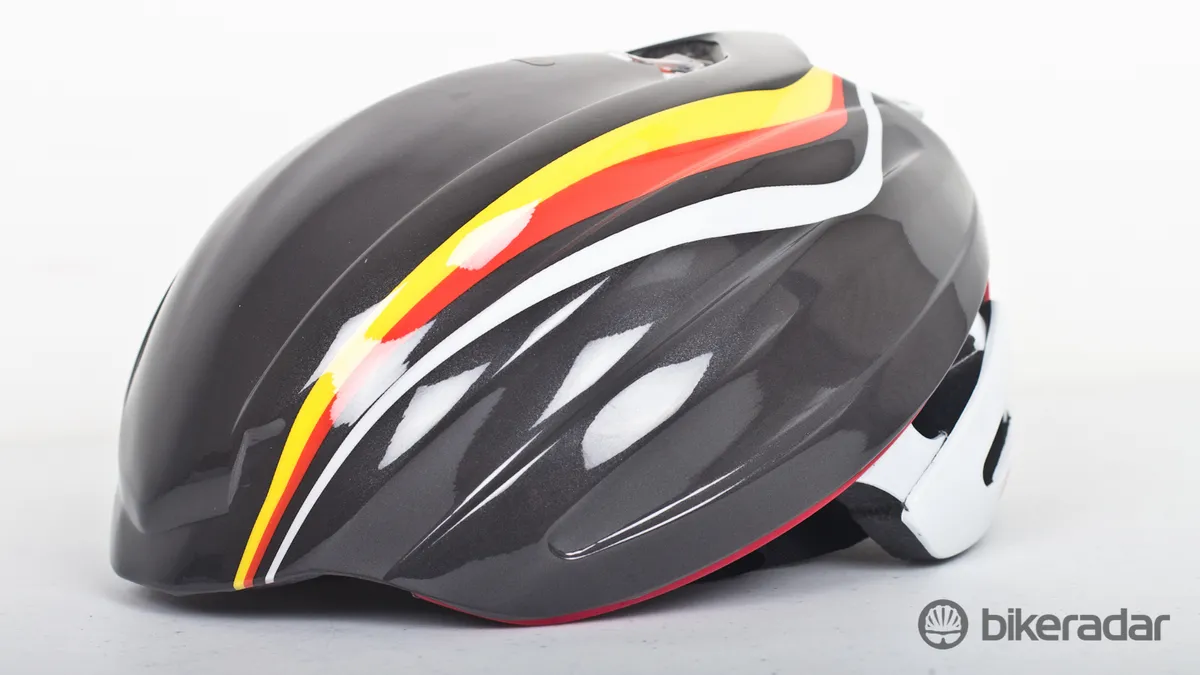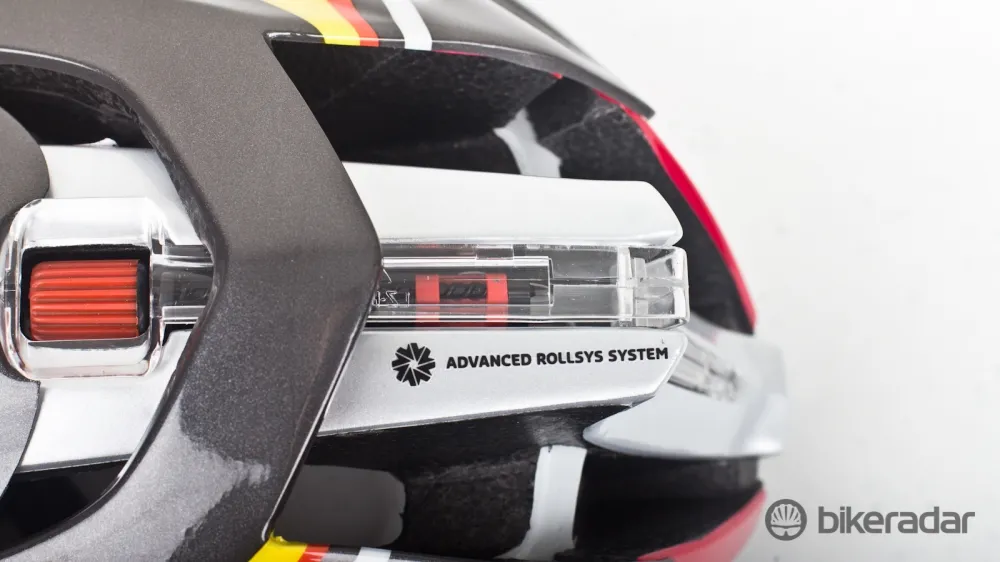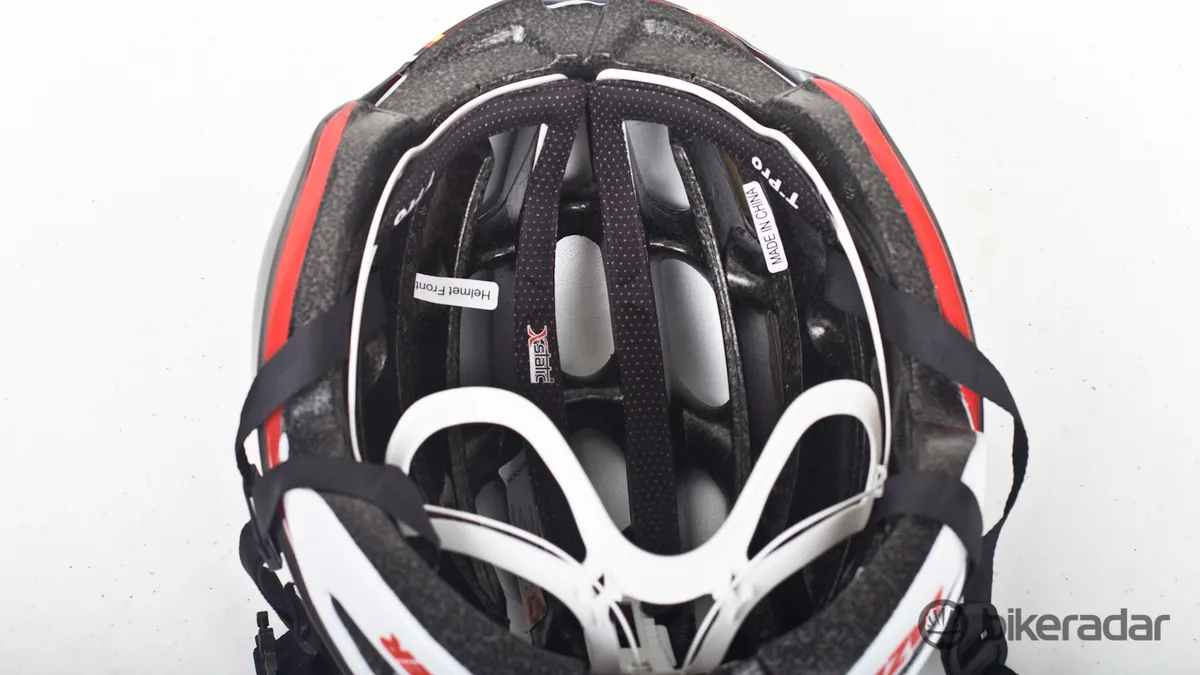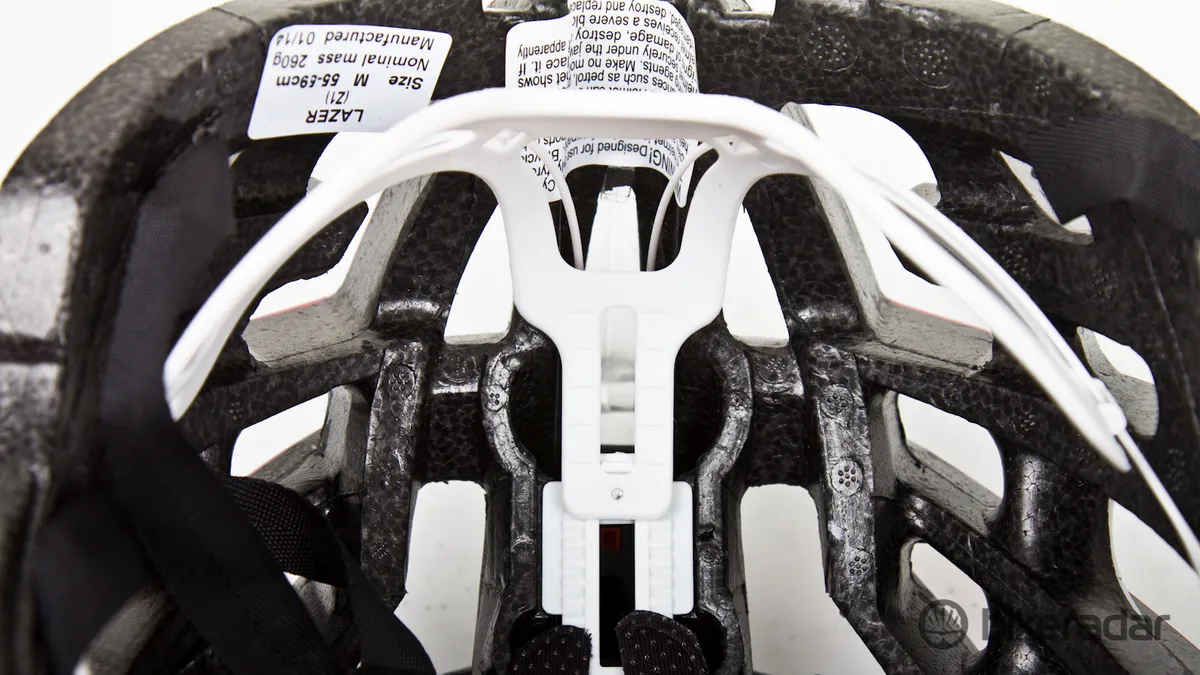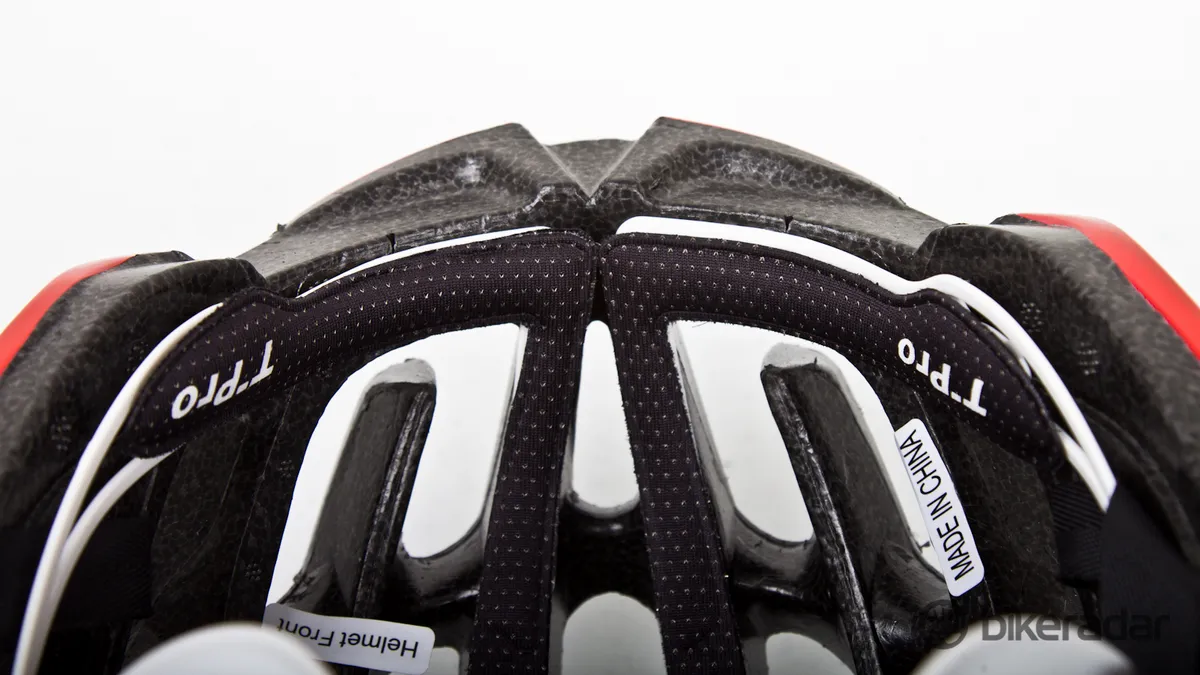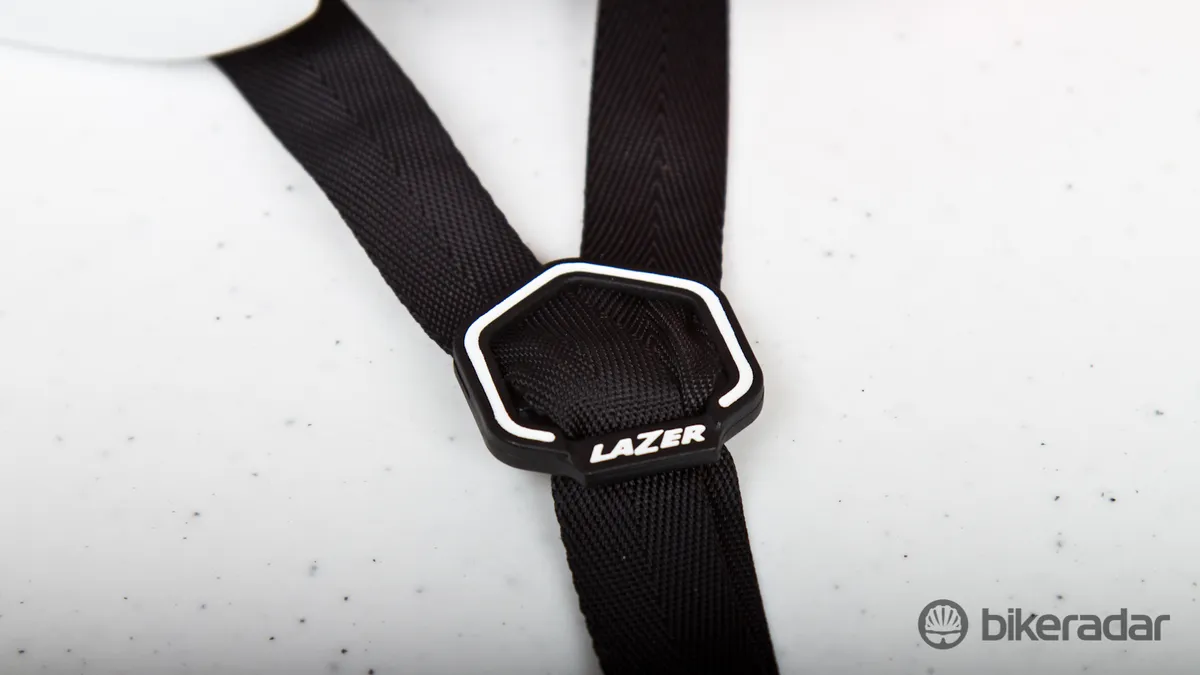Lazer’s new range-topping Z1 helmet has taken many of the unique features from the Belgian helmet manufacturer's previous helmets, and refined them.
Boasting 31 vents, the Z1 is Lazer’s best-ventilated helmet to date. At high speed, it feels as though a powerful fan has been pointed at your head. Even at speeds as low as 10-12kph there was noticeable airflow, so the Z1 should be comfortable enough for cross-country mountain bike use too. The deep channels inside the helmet take the air being sucked in through the sizable forward facing vents and guide it over the top of the head - evaporating sweat before it has the chance to drip onto your sunnies.
The large front vents are the perfect size for your fingers to take care of a niggling itch, and provide a docking station for sunglasses when they're not being worn. The Oakley and Rudy Project glasses we tested fitted well, but were much more secure when placed in upside-down.
While we cannot verify whether the included aeroshell provides any aerodynamic advantage, it does work well as a rain cover. The shell itself is simply a flexible piece of plastic that snaps on the helmet, covering all the forward-facing vents. Despite the blocked front vents, we were amazed at how much air still made its way through the helmet.
If the weather changes, you can remove the shell, roll it up lengthways, and carry it with you in a jersey pocket. It does take up a whole pocket though.
The new Advance Rollsys retention system uses a thumbwheel and a thin nylon band, which surrounds the wearer's head. As the thumbwheel is turned, the nylon band is tightened symmetrically allowing pressure to be distributed evenly around the head. This system is far lighter than the wire version used in Lazer’s Helium, Genesis and other models.
The retention system also features an adjustable ‘Headbasket’. With five possible positions, the wearer can move the Headbasket up or down so it cradles the back of their head. Because the Advance Rollsys does not sit on the rear of the Headbasket, a bonus is that the retention system is ponytail friendly.
The new Advance Rollsys works in unison with the Headbasket to create an outstanding fit. The thumbwheel is smooth and easily adjustable with one hand while riding and it holds snug too.
The Z1 is constructed with Lazer’s RBS or Rigid Brace System, which is like the roll cage of a race car. If the helmet takes an impact, the RBS will keep the cracked pieces of EPS foam together, offering some protection from successive impacts.
Another feature is what Lazer calls T-Pro. “The T-Pro design adds material around the temples for better protection. In a crash the temple seems to be the most common area of the head to take an impact, so by adding material to this area, it should reduce the potential for head injury,” explains Daniel Pickering, Lazer Brand Manager at Australian distributor BikeSportz.
The T-Pro does come lower over the temples than most helmets on the market. To keep vision unobstructed, the added material stops before the centre of the forehead, where the helmet is cut a few centimetres higher. While the look of this polarised opinions within the BikeRadar team, its function outweighed its form.
The Z1 is fully compatible with Lazer’s multiple helmet integrated accessories and even includes ‘Magdocs’; small magnets that attach inside the rear vents that hold onto Lazer’s Magneto sunglasses. Another is Lazer’s new Cappuccino lock, a small combination lock that replaces the chin buckle - perfect for a quick pitstop or cafe sit-down.
While Lazer claims the AS/CPSC version weighs 220g in a small — and CE production model weighs 190g in a small — our Australian standards medium sample tipped the scales at 242g (282g with the aeroshell), 8g below the claimed weight for this size.
Although the Z1’s overall aesthetics did not spark everyone's fancy, the breezy ventilation and updated Advance Rollsys retention system did. The Z1 is a fantastic helmet that builds on the already popular Genesis and Helium models from Lazer.
